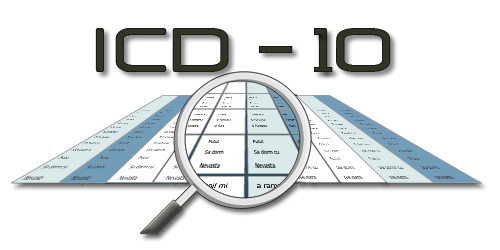Morbid obesity is a term used to refer to patients who are 50- 100% or 100 pounds above their normal body weight. A body mass index (BMI) of 39 is commonly used to identify this Obesity patients.
High Obesity or fatness is a serious medical condition that can interfere with one’s basic physical functions such as breathing and walking. Those people who are morbid obese stand a greater risk of developing other chronic illnesses such as diabetes high blood pressure heart diseases and cancer.
Obesity is a condition that describes excessive high accumulation of body fat or adipose tissue in relation to lean body mass (LBM). The amount of body fat in the fat takes into consideration the distribution of the fat in the body and the size of adipose tissue deposits.
Obesity is notably known to cause complicated pregnancies childbirth and puerperium.
ICD-10 Codes for Obesity and Morbid Obesity
International statistical classification of diseases and related health problems 10th revision is a coding system used to categorize diseases signs symptoms and abnormal findings as classified by the World health Organization.
Obesity as a health condition is mainly classified in chapter IV of Endocrine nutritional and metabolic diseases. Under this chapter Obesity and other Hyper alimentation are given the codes E66.0 to E66.9
These codes are defined as follows:
- ICD 10 Code E66.1 Obesity induced by the use of drugs.
- ICD 10 Code E66.2 Extreme obesity with alveolar hypoventilation
- ICD 10 Code E66.8 Morbid obesity
- ICD 10 Code E66.9 Unspecified obesity (Simple Obesity NOS)
Weight gain represented by E66.1 refers to drug induced obesity related to caloric excess in the body, this can result from hyperphagia or reduced metabolic rate in the body .E66.01 refers to severe obesity due to excess calories in the body which can lead to complicated and severe health conditions. This form of obesity is attributed to the numerous causes of heart diseases and complication which is notably known to cause strokes and high blood pressure.
E66.2 ICD 10 Code for High obesity with Alveolar Hypoventilation
E66.2 is an ICD10 code specifically designed to describe alveolar hypoventilation which is a condition for extreme levels of obesity which can result in a person finding it difficult to take enough breaths per minute. The symptoms for this disease are usually worse when one is sleeping and periods of Apnea. Some of the symptoms that this code represents include blue coloration of the skin caused by lack of oxygen fatigue and lethargy.
E66.9 ICD 10 Code for Common Obesity
E66.9 on the other hand will be used to refer to the simple forms of obesity that can be controlled and not specifically caused by caloric excess in the body. It mainly stands for those types of obesity that do not come with any form of complication. This form of obesity can be caused by bad eating habits which can be controlled by engaging in good eating habits.
Obesity Diagnosis
A patient with a body mass index (BMI) ranging from 60.0- 69.9 is usually grouped under the ICD Code Z68.44. The physician does not have to document the BMI, it can be documented by another clinician, but the diagnosis of
Morbid Obesity has to be documented by the physician or other qualified healthcare practitioner legally accountable for establishing the patient’s diagnosis.






















Post a Comment
Webmaster reserves the rights to edit/remove comments that is found irrelevant, offensive, contain profanity, serves as spam or attempts to harbor irrelevant links. Please read our Comments Policy for details.
Click to see the code!
To insert emoticon you must added at least one space before the code.